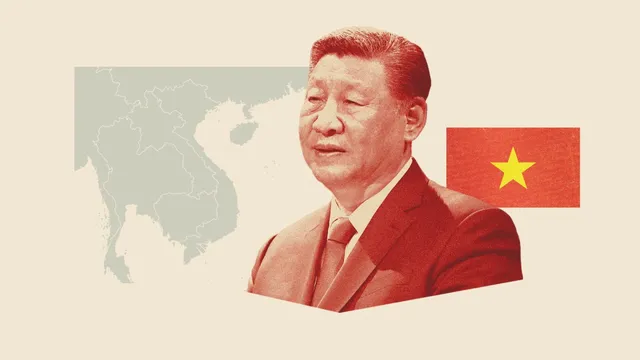
Xi Jinping strengthens ties with Vietnam amid U.S. tariffs
2025-04-15 01:20- China's President Xi Jinping commenced a diplomatic tour in Southeast Asia, starting in Vietnam.
- The visit aims to strengthen trade relations amidst ongoing tariffs imposed by the U.S.
- Xi's trip highlights China's commitment to being a stable global trading partner.
Express your sentiment!
Insights
On April 14, 2025, in Vietnam, China's President Xi Jinping commenced a significant diplomatic tour of Southeast Asia, starting with Vietnam. This visit was crucial as it aimed to enhance economic cooperation and reaffirm China's role in global trade amidst the ongoing trade conflict with the U.S. President Donald Trump had recently imposed tariffs, which had led to significant confusion in the global trading system. The tariffs particularly affected Vietnam, with the U.S. imposing a hefty 46% tariff before putting it on hold for 90 days. During this period, Xi's trip serves as an opportunity for China to position itself as a stable trading partner in contrast to the U.S., facilitating discussions around trade, investments, and mutual cooperation in areas such as agriculture. In 2024, trade between China and Vietnam had surged by 14.6%, making China a vital partner for Vietnam's economy and vice versa. Xi's visit featured high-profile meetings with Vietnamese leaders, emphasizing the importance of Vietnam in China's regional strategy, especially given the complexities of U.S. tariffs that have forced Southeast Asia to seek more resilient partnerships. This tour is expected to conclude with Xi's travel to Malaysia and Cambodia, aiming to secure alliances that could mitigate the effects of the U.S. tariffs on regional economies and bolster geopolitical influence.
Contexts
The trade relations between Vietnam, the United States, and China have been characterized by a complex interplay of economic interests, geopolitical strategies, and shifting alliances. As of April 2025, Vietnam has positioned itself as a crucial player in the regional and global supply chains, particularly in light of ongoing tensions between the US and China. The emergence of Vietnam as a manufacturing hub, driven by foreign direct investment and trade agreements, has significantly strengthened its economic ties with the US, while simultaneously maintaining an intricate relationship with China, its largest trading partner. This duality reflects Vietnam's strategy to balance its economic dependencies and political relationships amidst the backdrop of the US-China rivalry. In recent years, as US-China relations have soured, Vietnam has capitalized on the situation by attracting businesses seeking to diversify their supply chains away from China. The US's focus on reshoring and its efforts to limit reliance on Chinese goods have benefited Vietnam, particularly in sectors like textiles, electronics, and consumer goods. Additionally, the US has recognized Vietnam's potential as a strategic partner in Southeast Asia, leading to enhancements in their bilateral ties, including the Comprehensive and Progressive Agreement for Trans-Pacific Partnership (CPTPP) and discussions surrounding possible trade exception policies for Vietnam. Conversely, Vietnam's trade relationship with China remains robust and multifaceted. China continues to be a significant investor in Vietnam, with substantial involvement in infrastructure projects and manufacturing capabilities. However, the dynamics of this relationship have been complicated by territorial disputes in the South China Sea and growing concerns over economic dependence. Vietnam has demonstrated its intent to manage this relationship prudently, taking advantage of Chinese investments while simultaneously seeking to fortify its economic sovereignty and diversify its international partnerships. Looking ahead, the forecast for Vietnam's trade relations with both the US and China is optimistic yet cautious. Economic analysts predict that Vietnam will continue to expand its manufacturing base and export markets, thereby making it an essential link between the US and Chinese economies. However, the geopolitical landscape remains volatile, and Vietnam will need to navigate its relationships carefully to maximize benefits while mitigating risks associated with overdependence on any single partner. As Vietnam continues to forge a unique identity in global trade, the interplay between its relationships with the US and China will shape not only its own economic future but also the broader landscape of Southeast Asian trade and diplomacy.